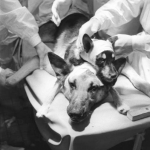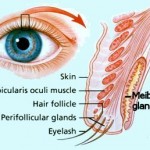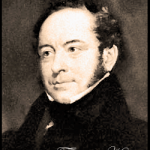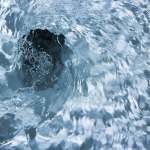Weekly Wrap Volume 95
 What is the Hottest Temperature Possible?
What is the Hottest Temperature Possible?
The idea of absolute hot springs from its better-known cousin, absolute zero, which, as you may recall, is 0 K, -273.15° C or -459.67° F. And although abridged definitions of the lowest temperature will frequently state it is the point at which matter stops moving, this is technically incorrect. Absolute zero is actually the point where molecular motion no longer produces heat (but does have zero-point energy). Conversely, absolute hot, then, could be defined as the point where molecular motion couldn’t produce any more heat, no matter what the circumstances. In the Standard Model of the universe, the hottest possible temperature ever reached occurred a fraction of a second… (more)
For you, the trip has ended. You’ve “done your business,” (hopefully you’ve also had a few minutes of quality reading time), you’ve flushed the toilet, and you’ve moved onto the next thing. But for your “business,” a.k.a. organic solid waste, a.k.a. “Number Two,” the trip is just beginning. Here’s a general idea of what happens next. If you live in a rural area, your house is probably hooked up to a septic tank. We’ll get to that later. Before the 20th century, “sanitary systems” typically dumped raw sewage directly into rivers, streams, and oceans. Today, if you live… (more)
 The Origins of Mother’s Day and Its Inventor’s Campaign to Put a Stop to It
The Origins of Mother’s Day and Its Inventor’s Campaign to Put a Stop to It
Today, Mother’s Day is a holiday of joy, brunches, gifts, flowers and phone calls. In fact, phone traffic spikes more on Mother’s Day than any other holiday. This annual celebration of moms everywhere was first officially established in 1914 when President Woodrow Wilson issued a presidential proclamation, which read that this is the day we “[publicly express] our love and reverence for the mothers of our country.” The mother of Mother’s Day was a woman named Anna Jarvis, who, despite never becoming a mother, spent many years advocating for a national day for mothers because she felt they didn’t get enough recognition for all they did. Unfortunately, after she was successful in her campaign, Jarvis became so distraught by the commercialization of Mother’s Day that she eventually denounced the holiday and campaigned… (more)
 Two-Headed Dogs and Human Head Transplants
Two-Headed Dogs and Human Head Transplants
Medical science has advanced an astounding amount in the last 50 years or so and we can do things today that a half a century ago even in that era’s science fiction would have been considered science fiction. By the same token though, there were things done in the 1950s and 1960s that people today are still skeptical actually happened, like all those experiments that resulted in a bunch of two headed dogs. Said experiments were conducted by one, Vladimir Demikhov, a Soviet scientist who is noted as being a pioneer in the field of organ transplantation. Dr. Demikhov was responsible for, amongst other things, pioneering the use of immuno-suppressants in organ transplants and designing the “first mechanical cardiac-assist device”, essentially the precursor to modern artificial hearts. With this latter device, Demikhov was able… (more)
This Week’s YouTube Videos (Click to Subscribe!!):
- The Man the Hubble Space Telescope was Named After
- Can Lobsters Really Not Die of Old Age?
- The Truth About the Infamous McDonald’s Hot Coffee Incident
- What are the Black Spots on Corn Chips?
- The Actress Who Died on Stage While Portraying Her Theatrical Death
- Elvis Has Left the Building
- 10 Amazing facts #15
Bonus Quick Facts
- During the Apollo program, astronauts struggled to get life insurance, so that if they died, their families would be taken care of financially (a much bigger deal back then when a woman’s ability to support herself very unfortunately largely came down to “find a husband”). As such, the astronauts on those missions each autographed a large number of postal covers made by The Manned Spacecraft Center Stamp Club and Al Bishop. The idea was that if the astronauts died on the mission, then those postal covers would become extremely valuable, and thus were to be sold at auction with the proceeds going to their families.
- You might think the “Jekyll” in “The Strange Case of Dr. Jekyll and Mr. Hyde” is pronounced such that it rhymes with “freckle,” but you’d be wrong. According to none other than the author himself, R.L. Stevenson, the name should be pronounced “Jee-kal” as in rhymes with “fecal”.
- The actor who played Count Dooku in Episode II and III, Christopher Lee, in partnership with guitarist Richie Faulkner of Judas Priest fame, created a heavy metal album released on Lee’s 91st birthday. The album is based on the life of Charlemagne. If you don’t find this odd enough, you should know that this wasn’t Lee’s first metal album. It also wasn’t his first music album on the topic of Charlemagne. Lee’s first metal album, Charlemagne: By the Sword and the Cross, was released in 2010. It was followed by the aforementioned album made with Richie Falkner, Charlemagne: The Omens of Death, which came out in May of 2013. In 2012, he also released an album of covers of heavy metal Christmas songs called A Heavy Metal Christmas.
- As many people know, while filming Star Wars: A New Hope, Mark Hamill was in a car accident on January 11, 1977. From here, the myths abound, everything from him nearly losing his life to having massive facial reconstruction surgery. According to Hamill, though, it wasn’t that big of a deal, “I broke my nose, that’s it! But I’ve read accounts about how my face has been reconstructed with plastic surgery and how I was pulling myself along the highway with one arm looking for help. I even heard that I drove off a cliff! That’s the best one of all.” It should also be noted that filming for Empire Strikes Back didn’t start until March of 1979, over two years after Hamill’s accident, so he was all healed up by then. If you guessed from this that the commonly stated idea that the Wampa attacking Luke in Empire Strikes Back was written to explain why Hamill’s face was messed up is a myth, you’d be correct.
- For a period of 50 years in the 4th century B.C. a small force of 300 elite Theban soldiers dominated Grecian battlefields. What makes this band of brothers unique in history is that it was comprised entirely of male lovers, with each pair comprising of an erastes (the older man and mentor, called “lover”) and eromenos (the younger male and trainee, called “beloved”). The deep attachment this pairing forged between the two males was seen as a military advantage. Indeed, the Sacred Band were an incredible fighting force. For instance, the Band’s first victory was against a much larger Spartan force in 375 B.C., with one of the Band’s soldiers, according to Plutarch, remarking, “We have fallen into our enemies’ hands!” To which the leader of the Band, Pelopidas, remarked, “Why any more… than they into ours?” The Sacred Band crushed the much larger Spartan force; the first time in recorded history a Spartan army had been defeated by an army with inferior numbers. Their extreme loyalty to one another ultimately led to their utter defeat in 338 B.C. at the Battle of Chaeronea, when a young Alexander the Great, under his father Philip II of Macedonia, managed to defeat them. Because they would not leave one another or their fallen partners to retreat, the entire Band was killed. According to Plutarch, the victor, Philip II, wept over their bodies. Later, a massive stone lion was erected over their burial site.
- At Yale-New Haven hospital, economist Keith Chen and psychologist Laurie Stanos taught capuchin monkeys to use money. Among other fascinating results from this study was an interesting incident where one monkey managed to steal an entire tray of money tokens and flung them into the main cage that housed all the monkeys before it could be caught. The monkeys then all scrambled for the coins. With the temporary surplus of money, allowing for expenditures beyond food, and the fact that the monkeys had no concept of saving, one of the monkeys decided to pay another monkey for sex. Since that exchange, steps were taken to assure the monkeys would no longer be able to pay one another for sexual acts.
Other Interesting Stuff:
 What the “Sleep” In Your Eyes Is
What the “Sleep” In Your Eyes Is
“Sleep” is a type of “rheum”, which is the name for discharge from your nose, mouth or eyes during sleep. More specifically, eye rheum is known as “gound”. Gound is made up of a mixture of dust, blood cells, skin cells, etc. mixed with mucus secreted by the conjunctiva, as well as an oily substance from the meibomian glands. The meibomian glands are a type of sebaceous gland that line the rim of the eyelids with about fifty on the top and twenty five on the bottom of each eye. They secrete an oily substance called meibum that performs a variety of functions including: helps seal your eyes in an air tight fashion when… (more)
 The Greatest Practical Joke of the 19th Century, the Berners Street Hoax
The Greatest Practical Joke of the 19th Century, the Berners Street Hoax
The year was 1809. Famed English author, Theodore Hook, made a bet with one of his close friends, the noted architect and writer, Samuel Beazley, that within one week, he could make any house in London the most talked about place in the city. The house he ended up choosing was the home of the widow Mrs. Tottenham on 54 Berners Street, London, which was the same street that Earl Stanhope and the Bishop of Carlisle and of Chester, among other wealthy and well-to-do individuals, lived on at that time. It isn’t known why Hook chose Mrs. Tottenham’s home as no connection between the two is known and Hook himself never explained his selection. It’s entirely possible that it just happened to be a location where the home across the street could… (more)
For those who’ve never experienced this phenomenon, eye floaters are little oddly shaped objects that appear in your vision, often when one looks at bright light such as a blue sky. Their shapes vary greatly, but will often appear as spots, cobwebs, or randomly shaped stringy objects. These are not optical illusions, but rather something your eyes are actually perceiving. There are a few different things that can cause this, but in most cases these eye floaters are caused by pieces of the gel-like vitreous breaking off from the back portion of your eye and then floating about in your eye ball. The vitreous humor, or often just “vitreous”, is a clear gel that fills the gap between your retina and lens, helping maintain the round shape of your eye in the process. This gel is about 99% water… (more)
 Everyone Has Hemorrhoids, and What Causes The Inflamed Version
Everyone Has Hemorrhoids, and What Causes The Inflamed Version
Much like bathroom-humor at the dinner table, hemorrhoids can be a taboo subject. The truth is, everyone has them. Their job is to protect your anal sphincter muscles (the ones that open and close your anus) and to help keep your anus closed when you have moments of increased abdominal pressure, like when you’re coughing. They become a problem for us when they become inflamed. Once this happens they’re known as piles. Popular culture has led to “hemorrhoids” and “piles” to be interchangeable in common vernacular. By the age of 50, about half of the US population will have dealt with these inflamed itchy protrusions from your anus. Because most people with piles get curious about why their butt itches, let’s take a closer look at what they are, what causes them to become inflamed, and how we can prevent that from happening. Your anus is controlled by one… (more)
 Why the Insides of Apples Turn Brown When Exposed to Air
Why the Insides of Apples Turn Brown When Exposed to Air
The insides of apples turn brown when exposed to air thanks to a built in defense mechanism against bacteria and fungus. The trigger for this is damage to the cells, such as when you cut the apple, which then results in certain enzymes within the cells being exposed to oxygen. When this happens, the enzymes react to the oxygen creating an oxidized layer that provides some protection against foreign bodies. More technically, an enzyme called polyphenol oxidase (also known as tyrosinase), which is comprised of monophenol oxidase and catechol oxidase enzymes, when exposed to oxygen will result in phenolic compounds in the apple tissue turning into ortho-quinones or “o-quinones.” O-quinones are what is providing the protection from bacteria and fungi as they form a natural antiseptic. The o-quinones… (more)
| Share the Knowledge! |
|







To Daven Hiskey:
Please help with an alcohol question. If I spend hours working in an industrial refrigerated warehouse that’s kept at 34 degrees F, and during that time I frequently imbibe on vodka and orange juice which makes the work go “easier,” will the alcohol have an almost instantaneous drunkenness effect when I leave work and step into 92-degree summer heat?
I’ve seen this, but I can’t find any medico-scientific reference for same.